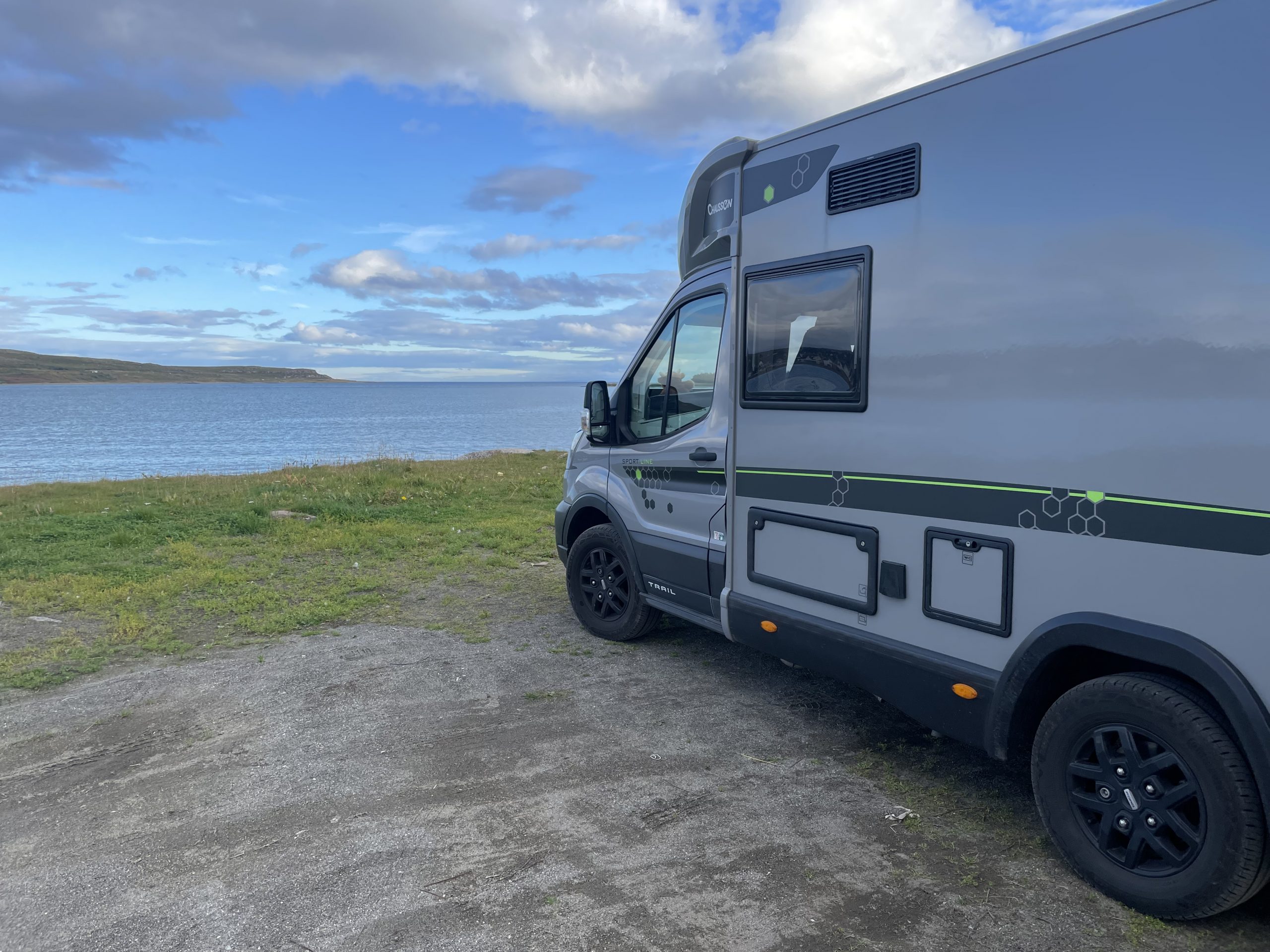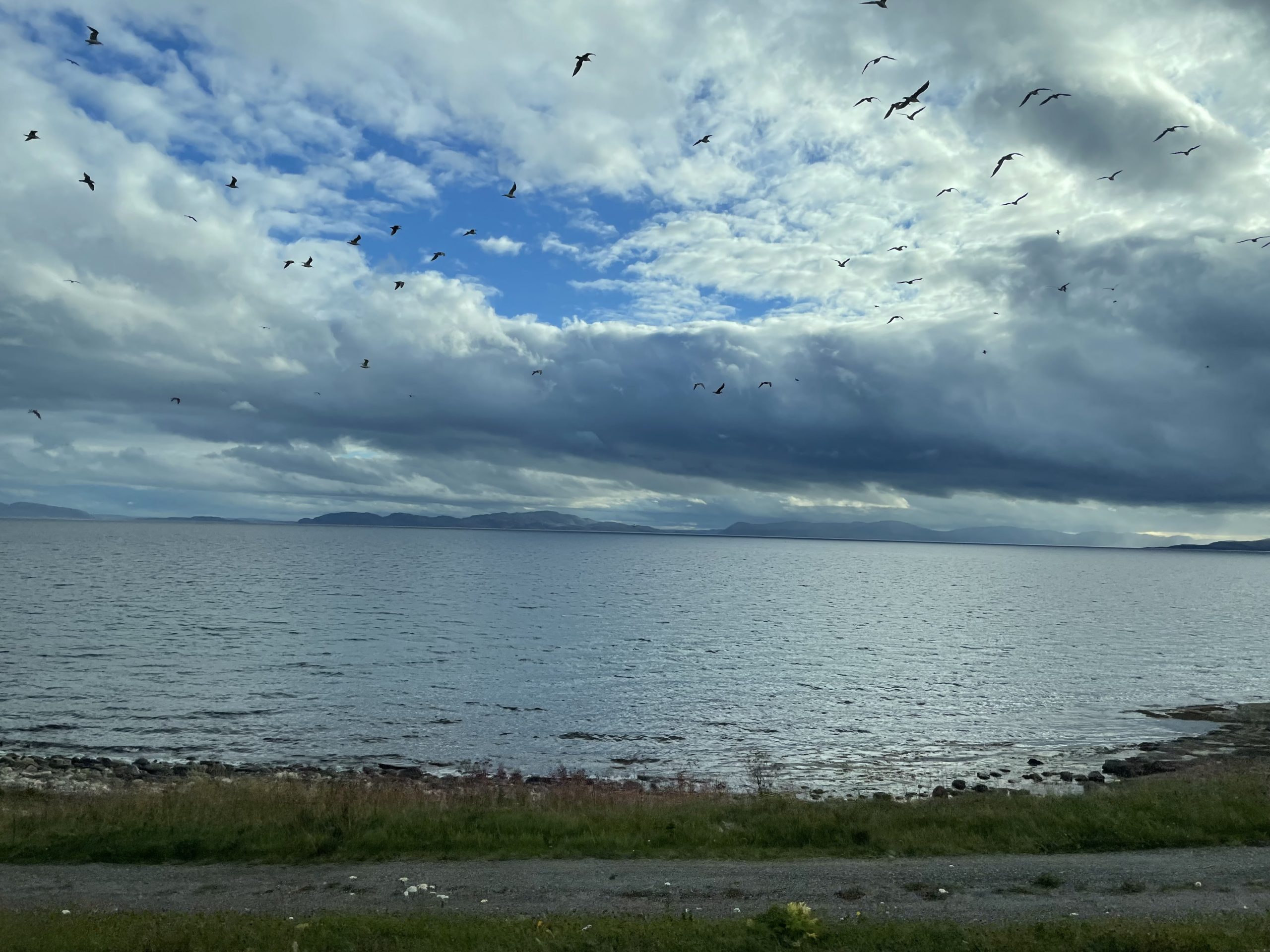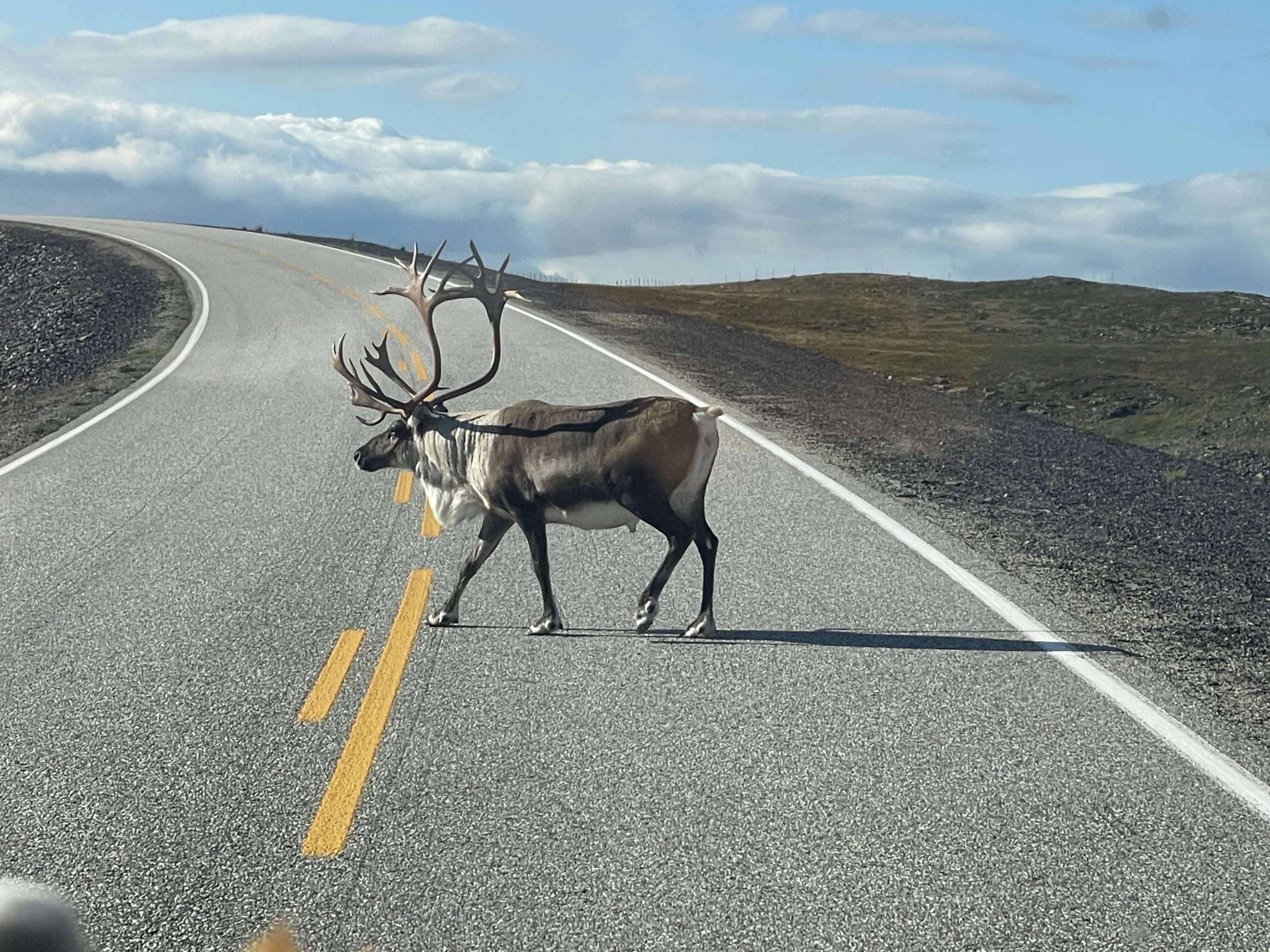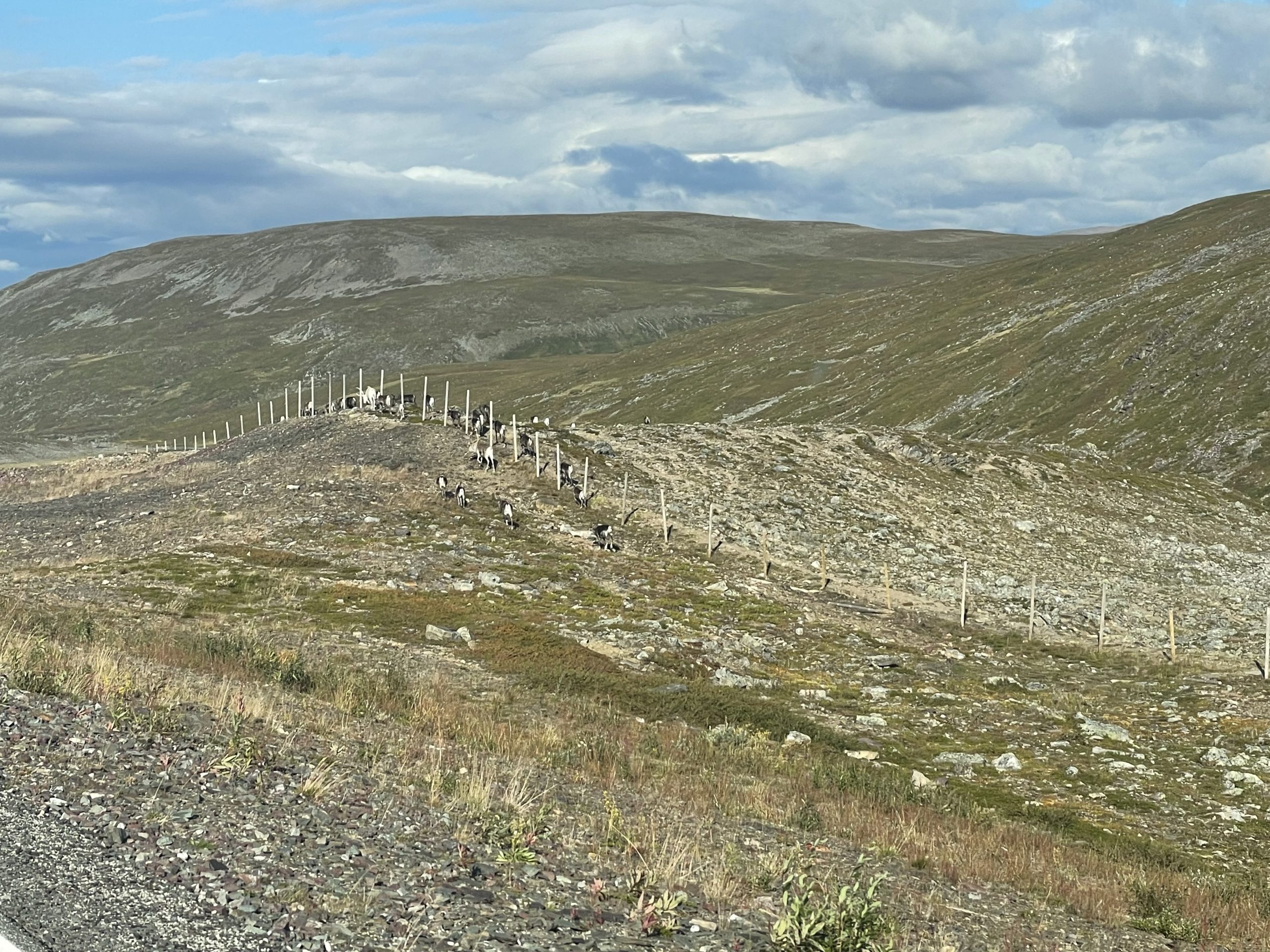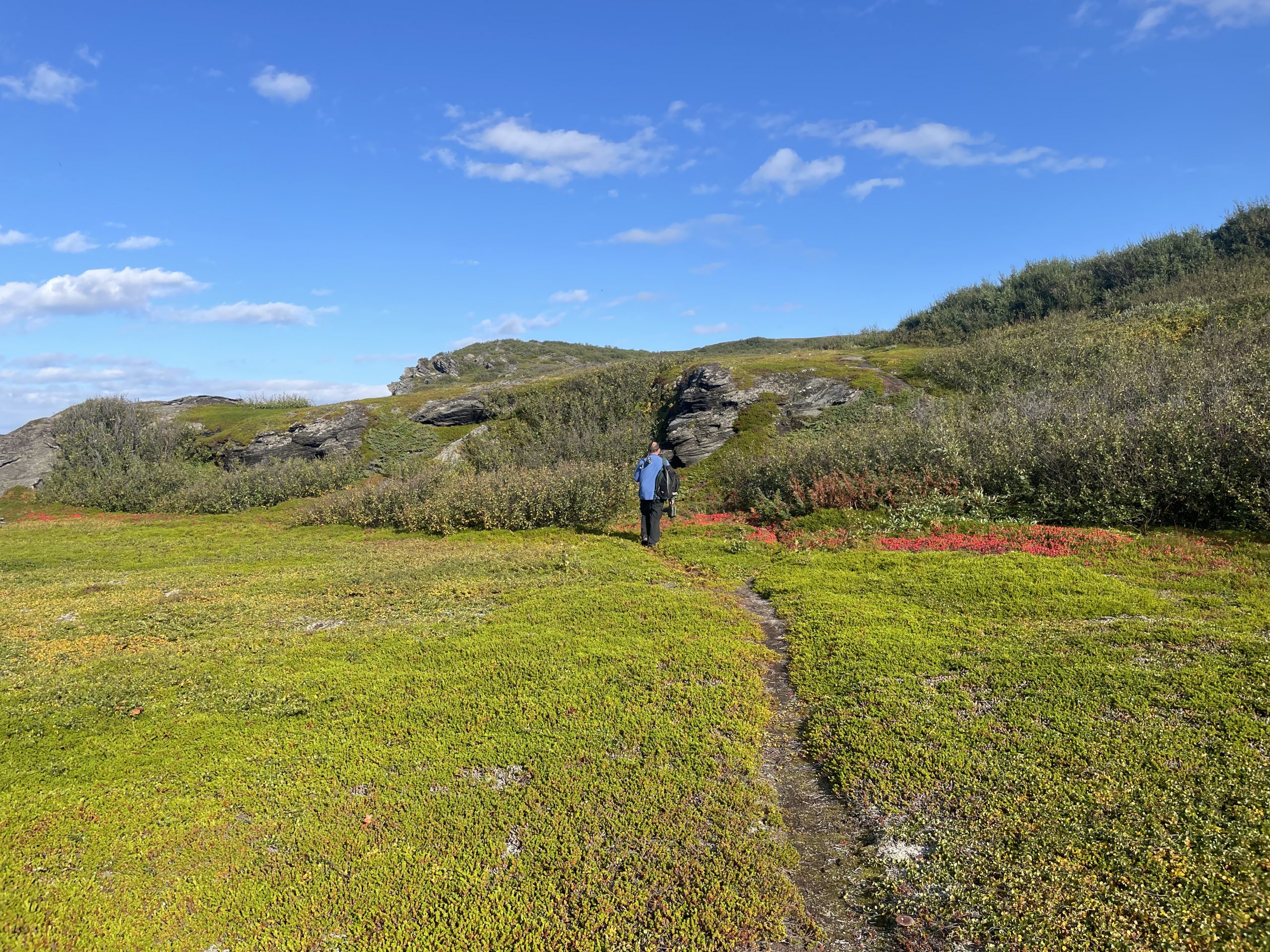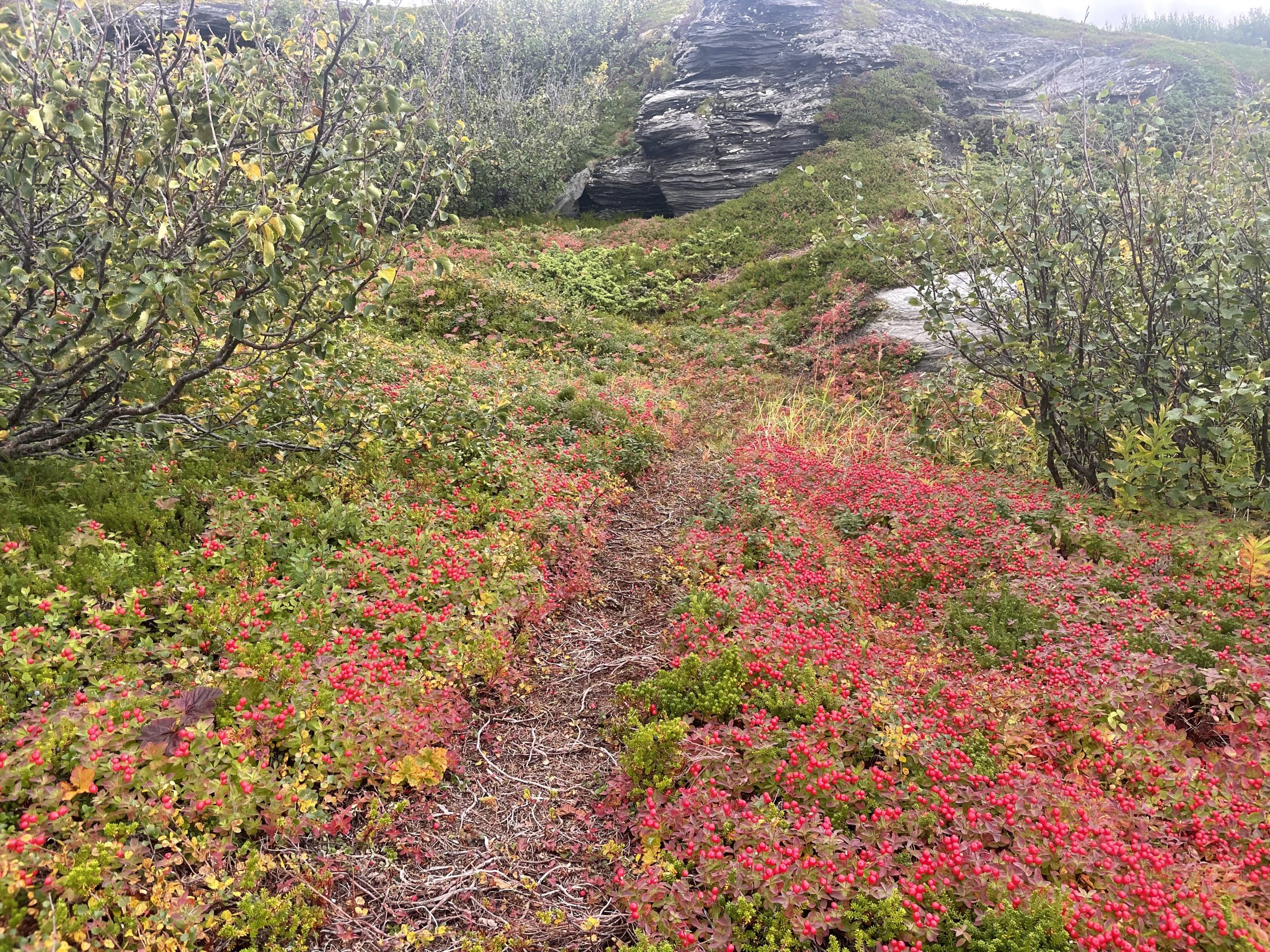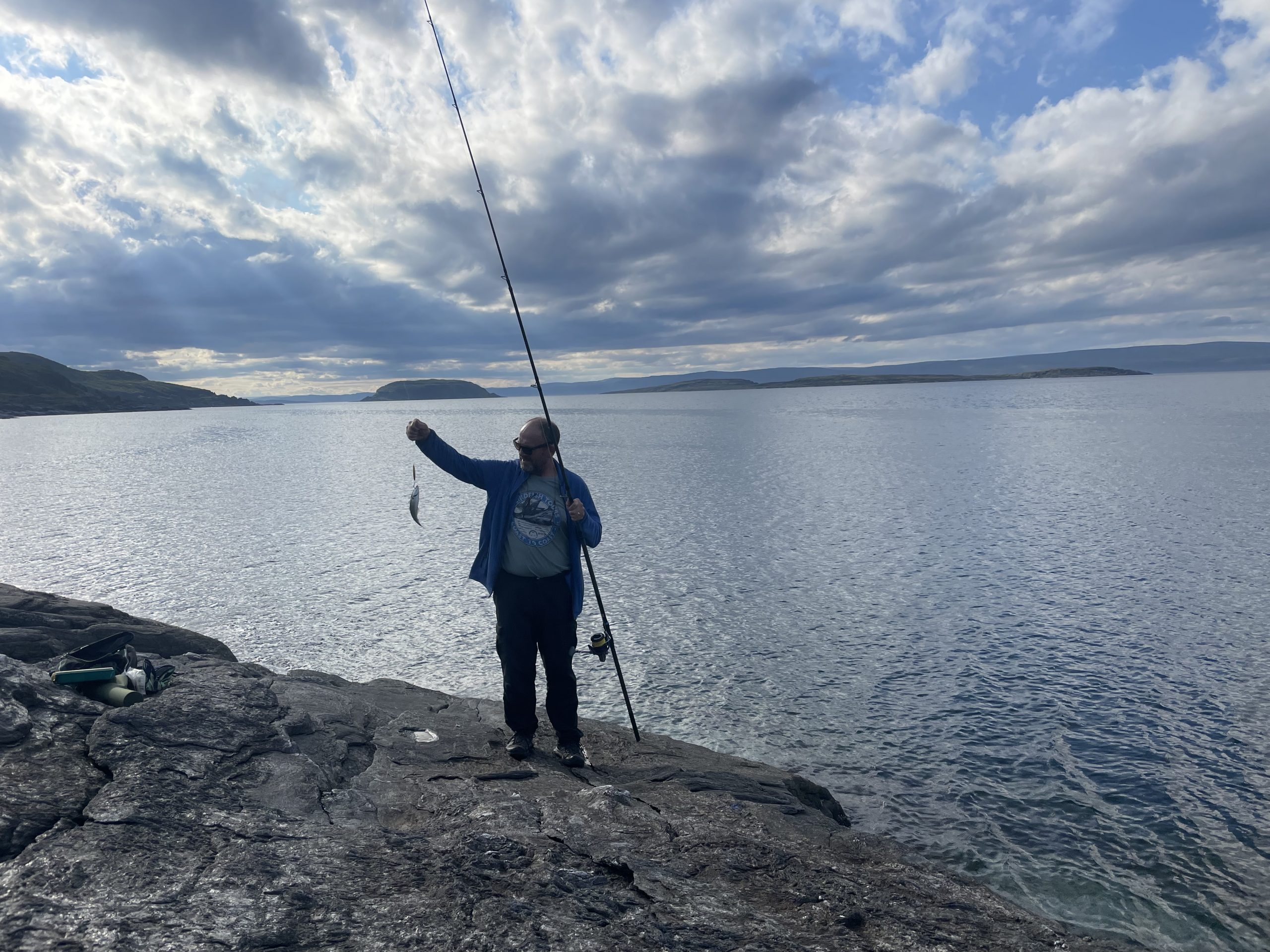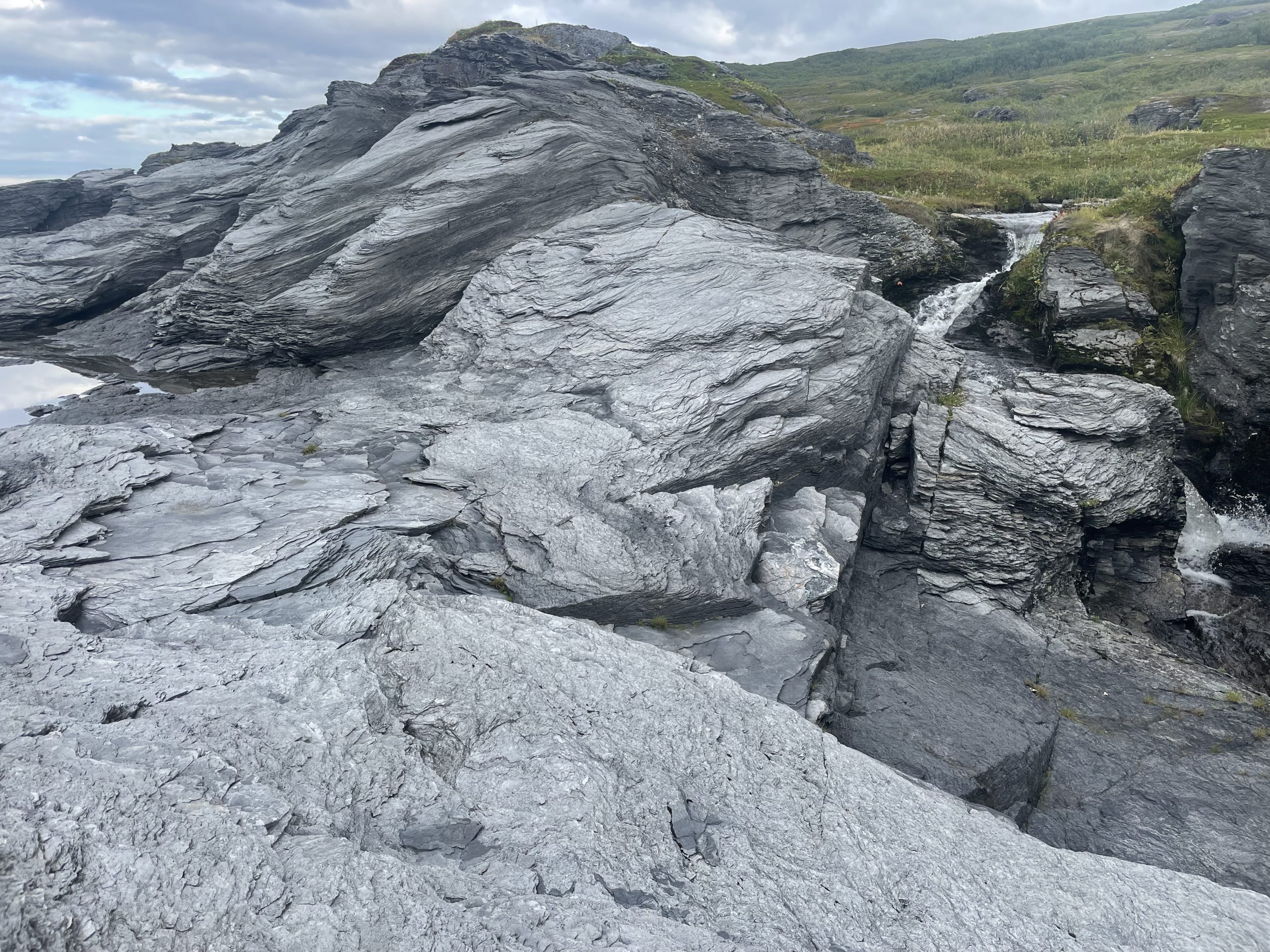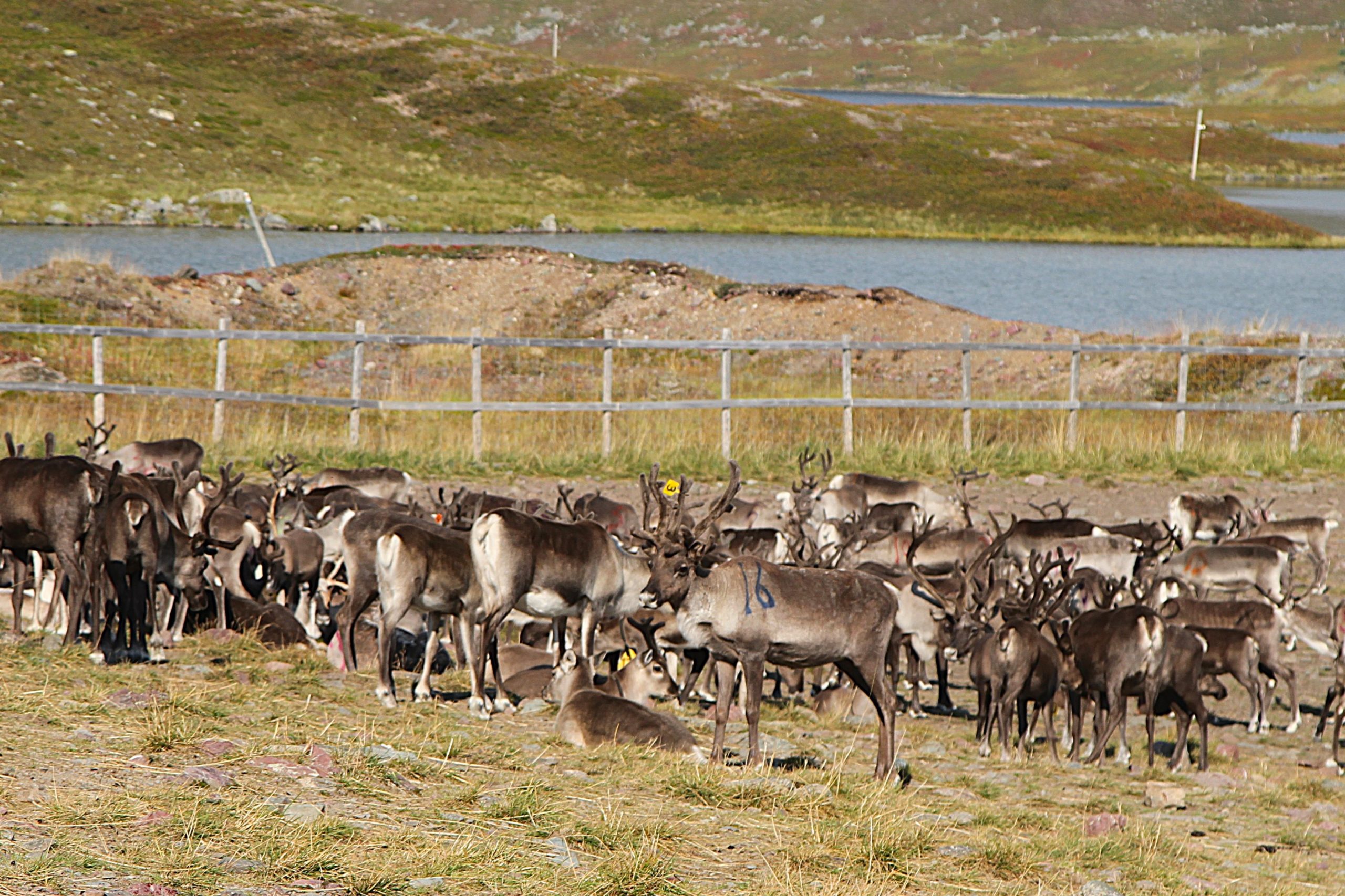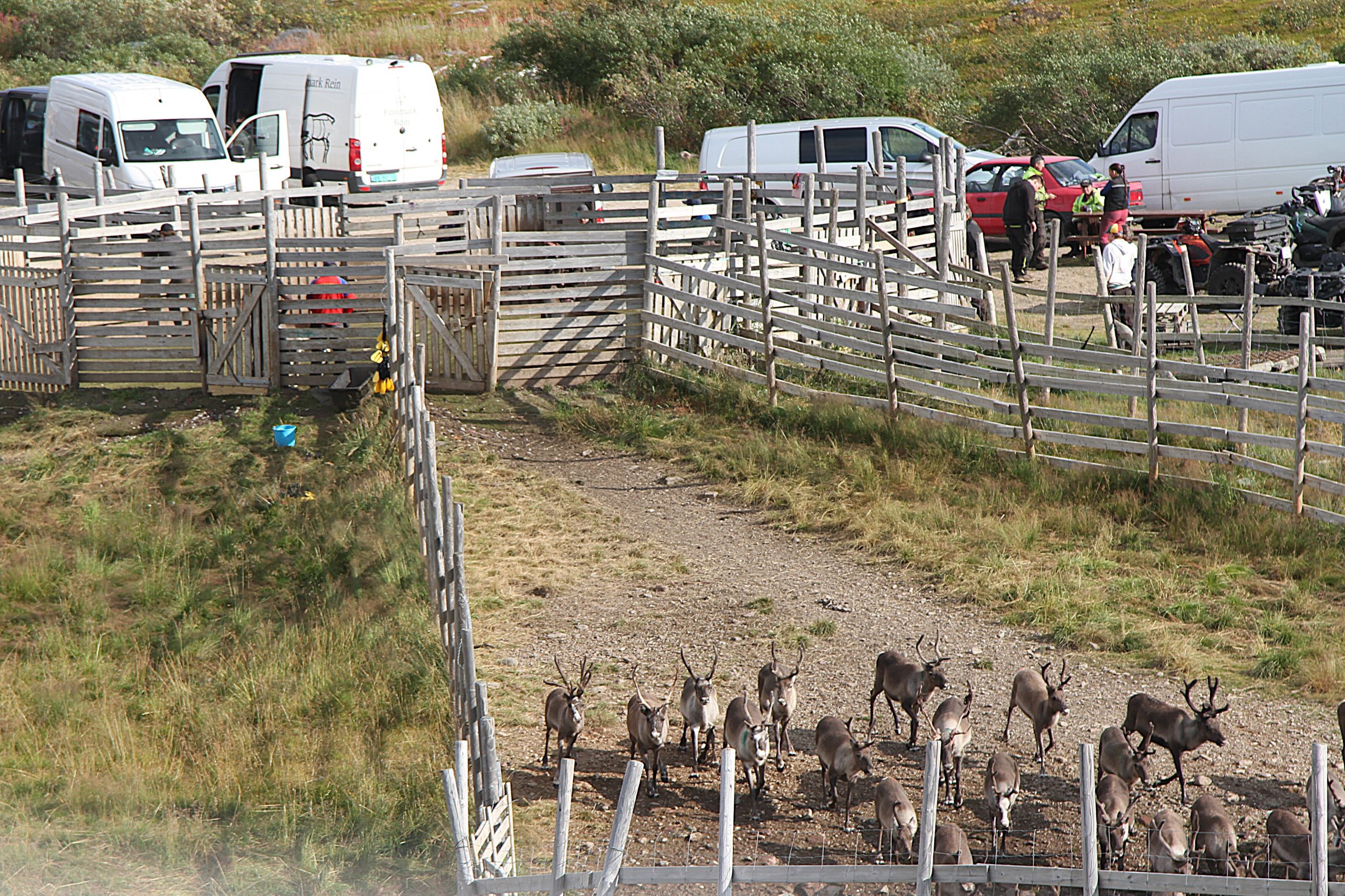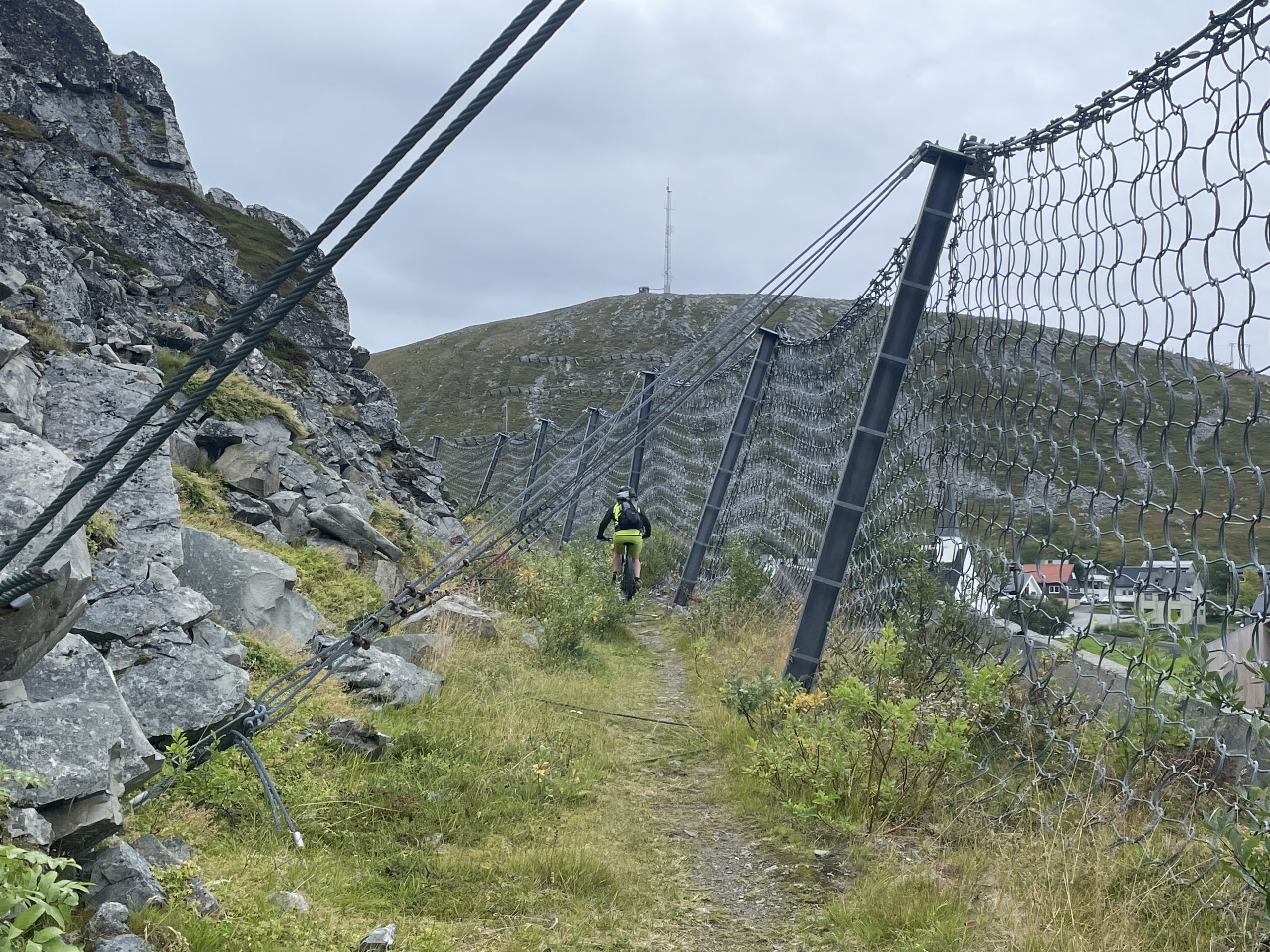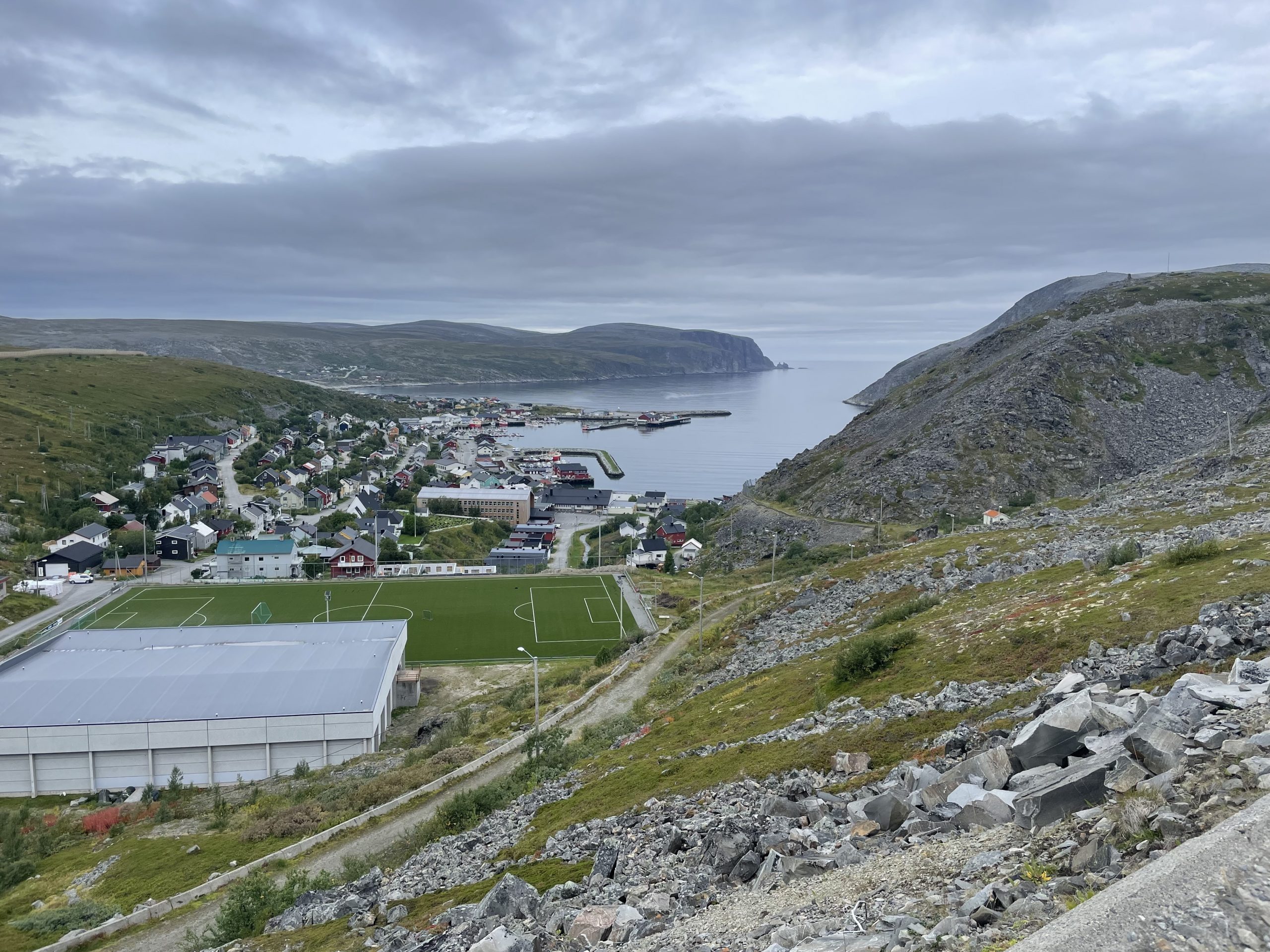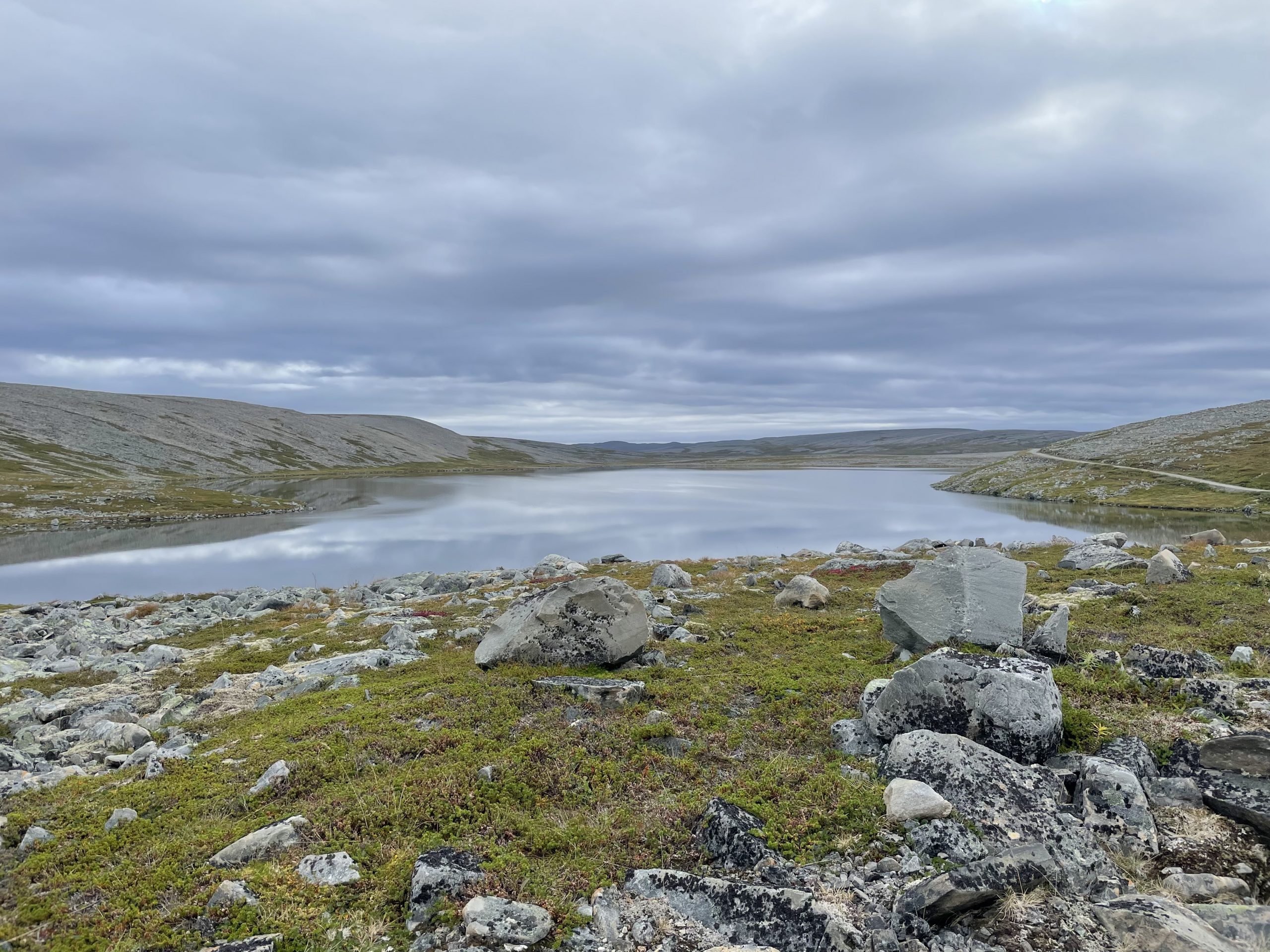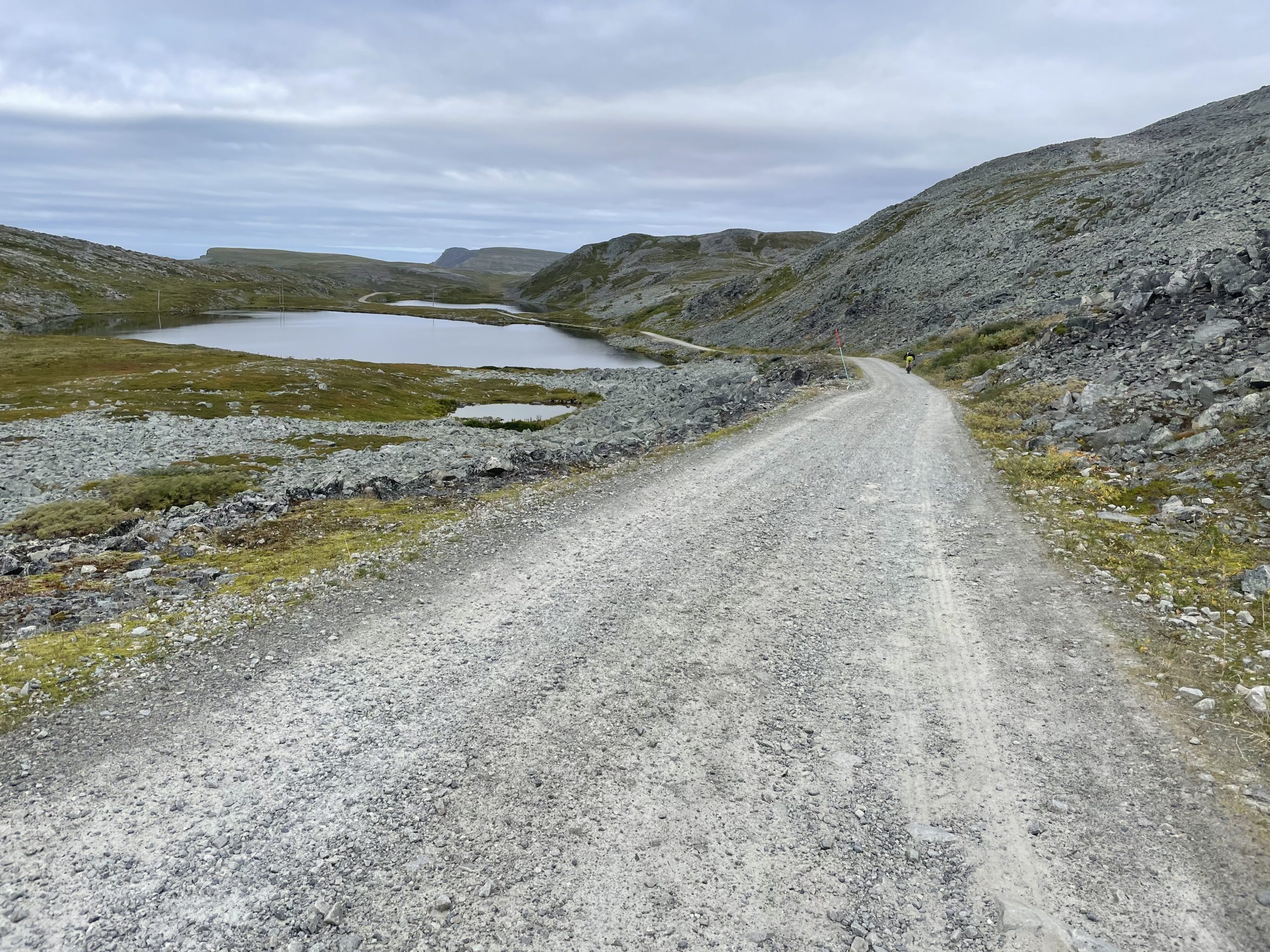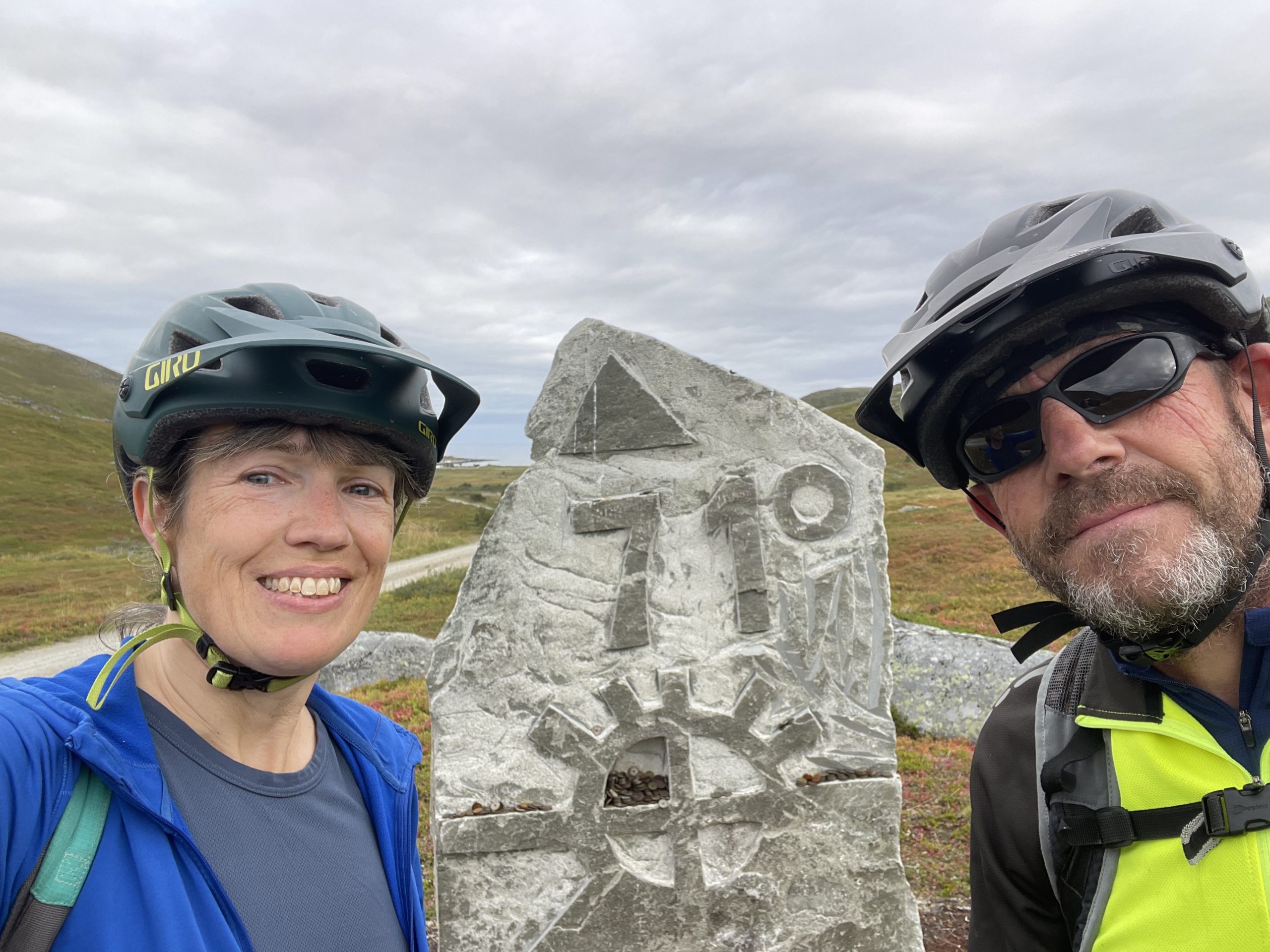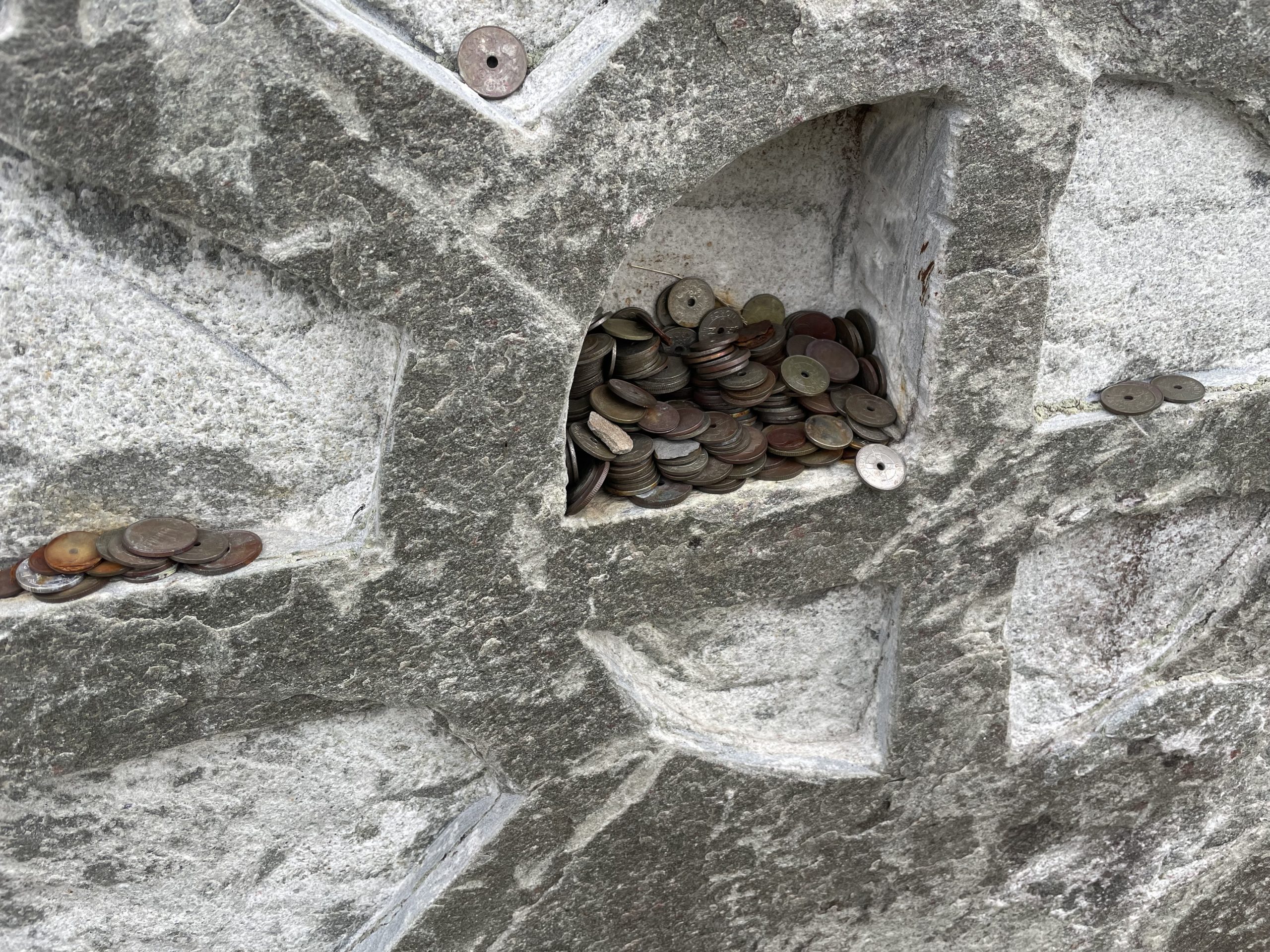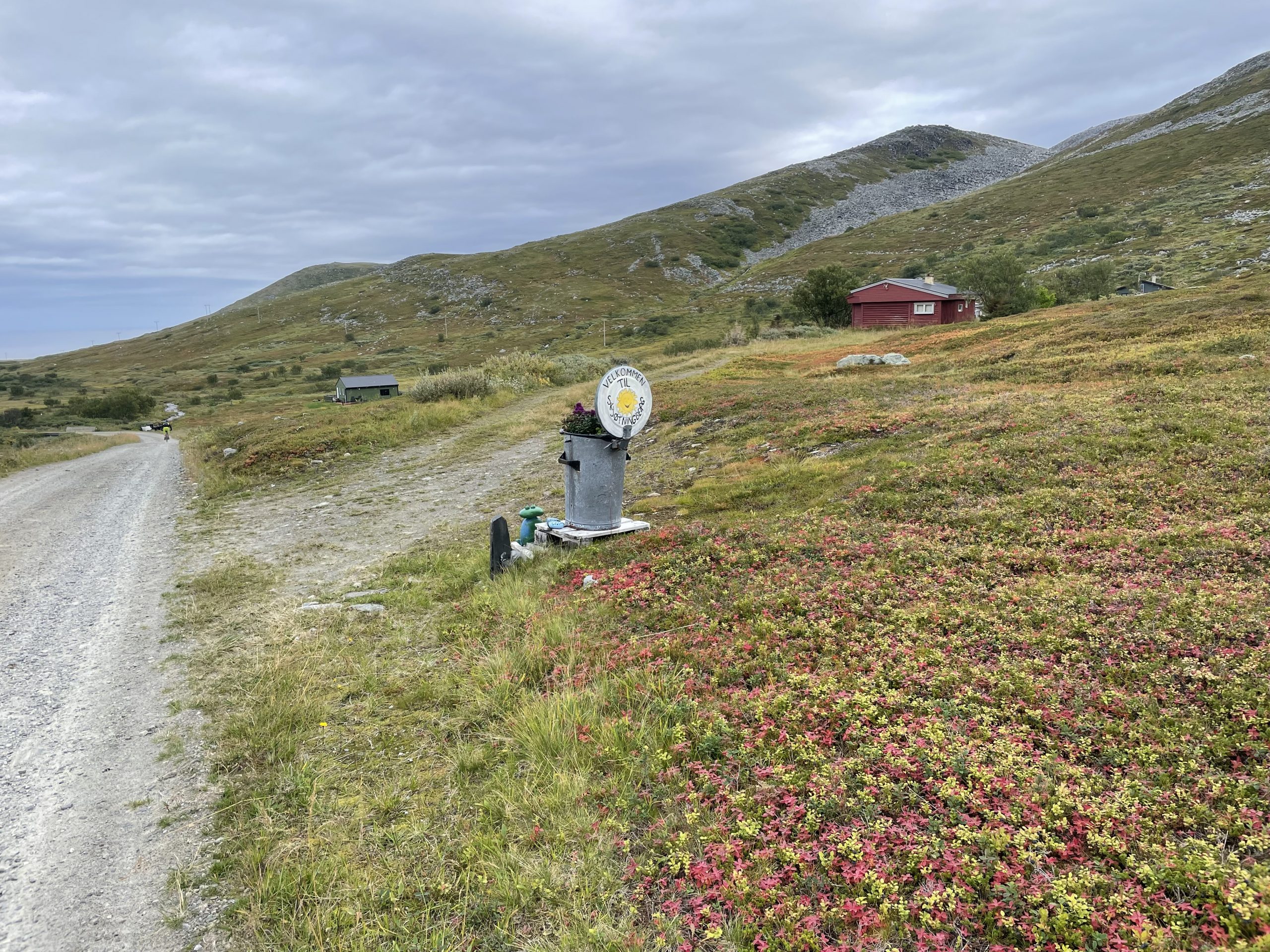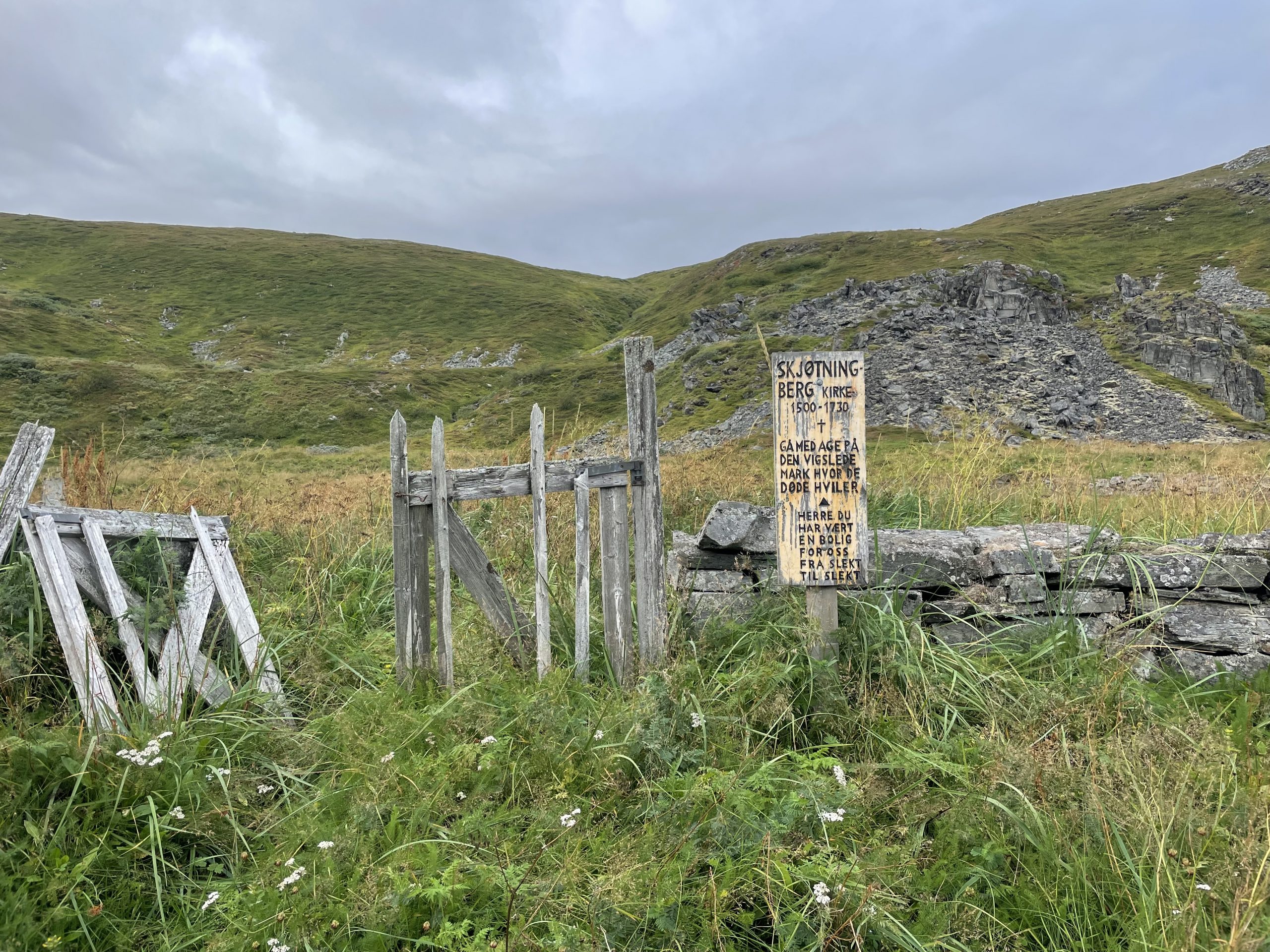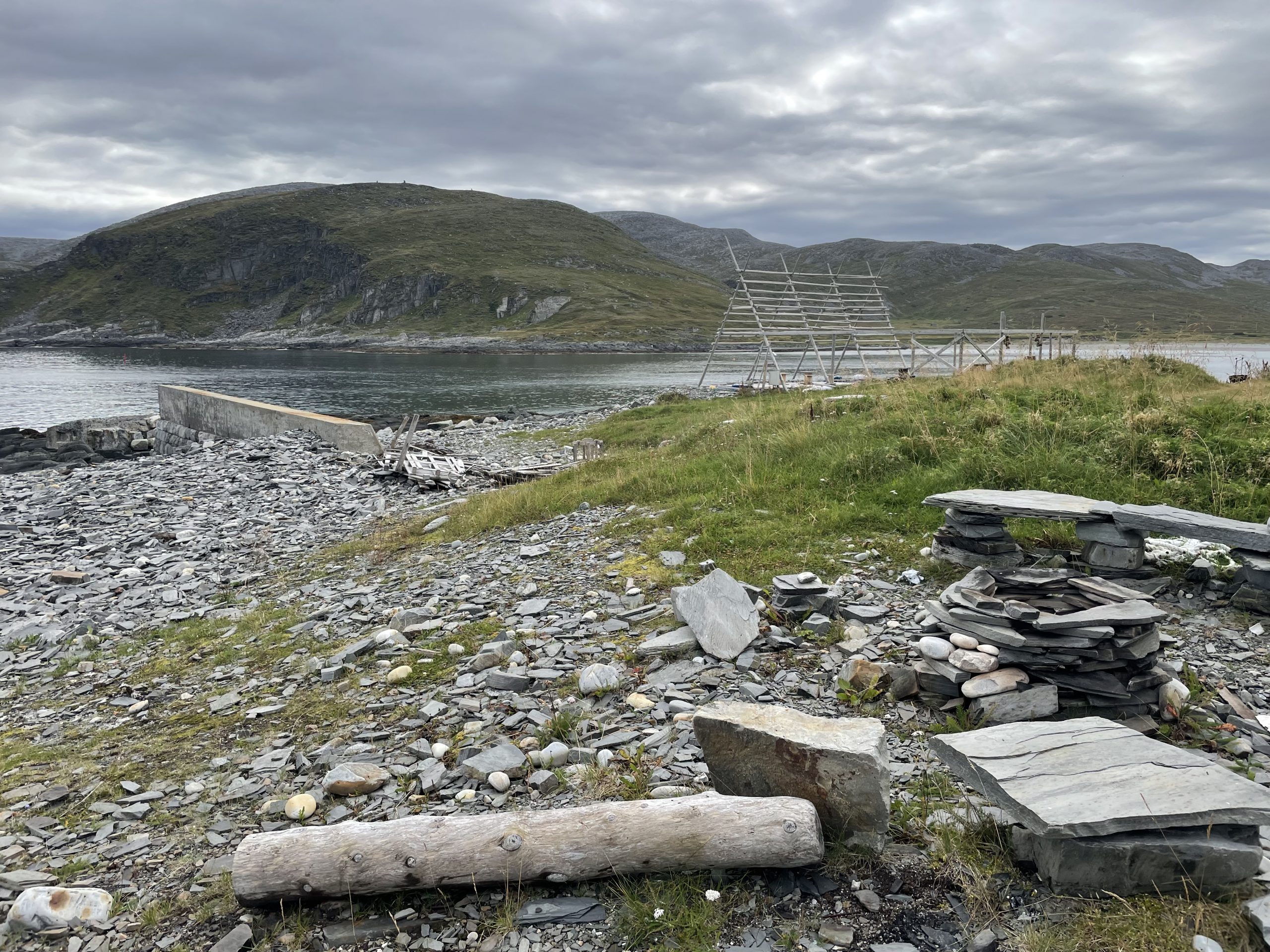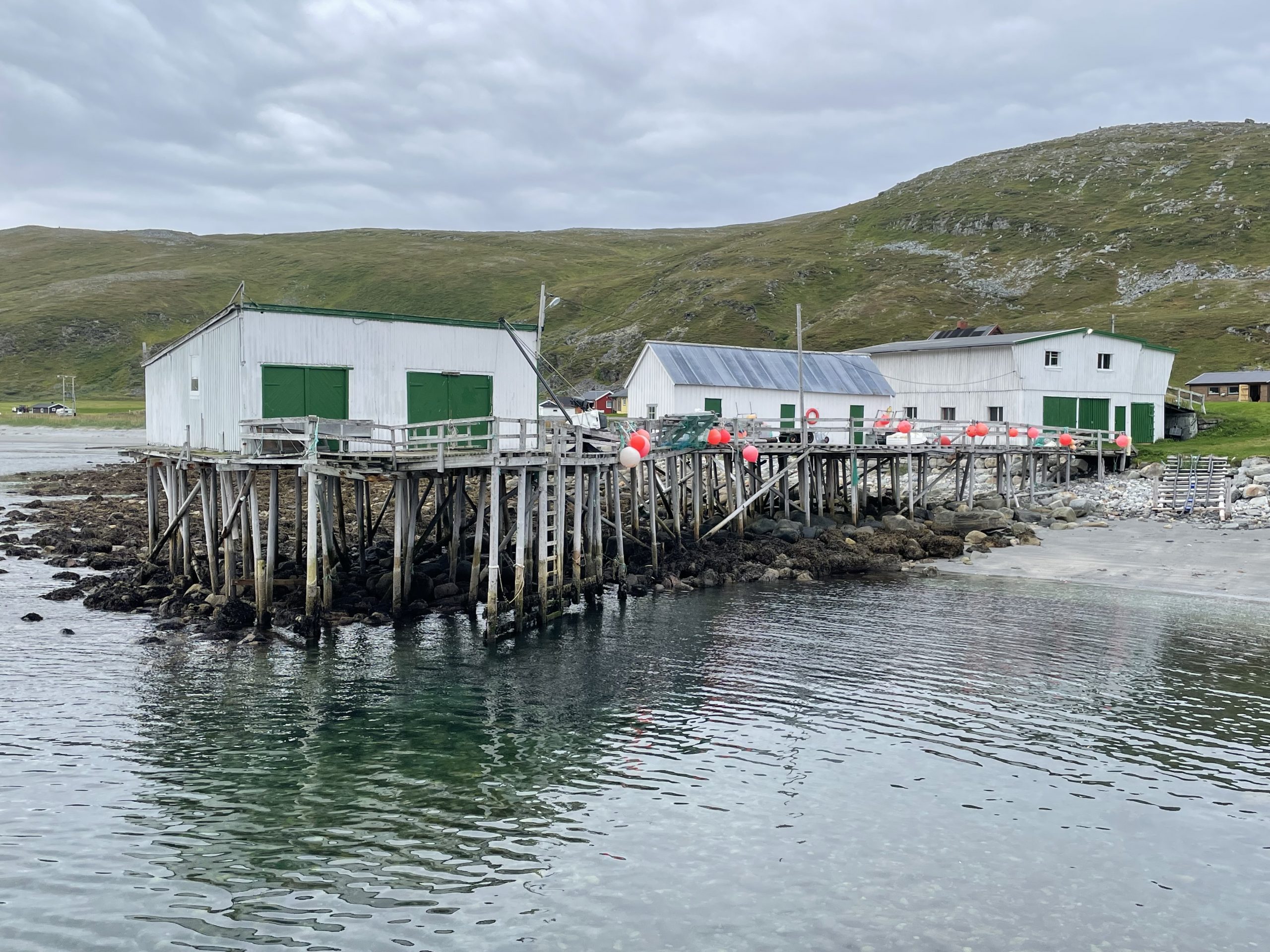06/09/2025
The north coast of Norway is made up of a number of peninsulas jutting into the Barents sea. We had been on the Varanger peninsular and were about to venture over to the Nordkinn (or Nordkyn) peninsular which was a short hop west.
A night in Vadsø
Before moving on we had to pick up some new brake pads for Paul’s bike. We’d replaced mine before we left but Paul had neglected his. On our downhill exploits at Hafjell he’d noticed that they were starting to sound worn. With a possible bike ride coming up he decided it was about time to replace them.
We parked on the large flat area next to the library at Vadsø and wandered over to the shopping mall opposite to see what we could find. Our first visit to Sport 1 wasn’t successful but we were directed to the Sportslager store next door where we found the correct brake pads. Everyone speaks such amazing English here which takes some of the jeopardy and stress out of interactions. Asking for help doesn’t require us to resort to mime or Google translate. The most Norwegian we’ve had to use is ‘Snakker du Englesk’ and the occasional ‘takk’,’ja’ and ‘nei’.
Unlike many other countries though, we are usually spoken to in Norwegian first. Somehow most people in Italy, Spain and other European countries always recognise that we’re not natives. A combination of our pale skin and our propensity to wear hiking clothes most of the time must mean we blend in better here.
We popped into the supermarket and spent a small fortune on a jar of decaffeinated instant coffee for Paul. We had since compared prices across a range of supermarkets and deduced that a) we didn’t have much choice, Norwegians just don’t do much decaffeinated coffee, and b) we weren’t ripped off. The going rate for a jar of Nescafe decaf, which appears to be our only option for instant, is somewhere between £8 and £10 across the board.
We decided to stay in the car park overnight. Paul immediately fitted his new brake pads and then we settled in to watch the sun set while large flocks of gulls or terns came in to roost. A seal bobbed around in the water offshore, it’s doggy face watching us for a while before it swam off.
- Parking in Vadso
- Large flocks of birds
Driving to Nordkinn
It was a long drive up to the Nordkinn peninsula but it must have been one of the most scenic we’ve done so far. The journey started by following a river with forest on either side of us. As we continued north we drove up out of the tree line onto a wild and open land. There are no trees up here to disrupt the view, just grass and low shrubs across a landscape of lakes and rock. We saw numerous reindeer as well as golden eagles flying overhead, their feathered legs and cruel beaks easy to see through our monoculars. We stopped to try to get photos of the eagles but they were feeling camera shy and disappeared from view.
After Ilfjord we had a stretch of coast where Paul had to stop numerous times to assess the fishing opportunities. The rock here was shining contorted schist. The layers crunched and crumbled under our feet as we walked down to the shoreline. The autumn colours were adding some spice to the view and even though Paul didn’t catch anything big enough to eat, I was able to pick enough berries to add to my yoghurt in the morning.
This was followed by another section of open moorland and tundra where we stopped to watch the Sami rounding up the reindeer and sorting the herd. This prepares the herds for the autumn rut and reindeer are also selected for culling. As the season progresses towards winter the reindeer and the Sami will move towards their winter grazing areas.
To reach the final part of the peninsula we had to drop down to sea level and cross a narrow isthmus. This low lying area is less than a km wide with two fjords reaching towards each other but not quite meeting. A memorial remembers the six fishermen who were killed by German soldiers here.
As we drove further north we could see shining white in the distance to the east. Curious, we looked at the map. We weren’t aware of any glaciers up here. These are not ice but rock. deserts. Vast areas of rock and boulders with little or no vegetation which cover much of the eastern part of the peninsula.
Along the route we saw many skidoos sat next to the road. We wondered who they belonged to and why they’d been left seemingly in the middle of nowhere. Maybe there were houses somewhere away from the road and these skidoos were placed to allow people to get to and from their cars. Perhaps they had just been abandoned where they were when the snow melted at the end of last winter. In the UK anything left unattended like that would have been spirited away long before.
Kjøllefjord parking
A final drive across lake dappled tundra took us to our destination of Kjøllefjord. We found the motorhome parking by the harbour and use the Campio website to book ourselves in. After getting settled we immediately realised that there was no service point here. As we needed to empty the toilet we had to drive back to the entrance to the village where there was somewhere to dump the toilet waste.
When we were finally parked up we were able to relax and enjoy the location. We were parked in front of an apartment building with a harbour view and electric hook up. We had access to the basement of the building where we could use the toilets, get a shower and even access a small kitchen.
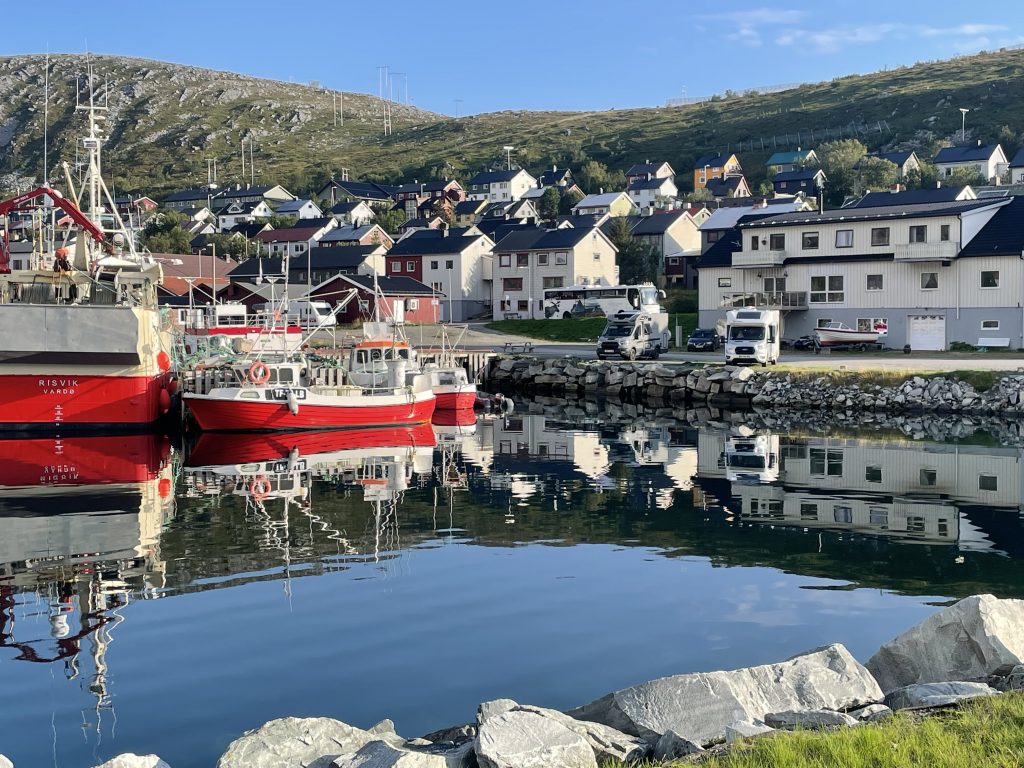
There was one other van here, a German couple were sitting outside in the sunshine. No surprise as the majority of motorhomes we’ve seen have been German or Norwegian. A few other nationalities have cropped up but we’re a long way from the UK, let alone Spain or Italy.
Paul immediately went out to explore the harbour breakwater and see whether there was a promising fishing spot. He came back to get his rod and fishing bag and almost immediately caught our dinner. The German man was very interested and then it became a good natured competition. No more decent sized fish were caught so I think Paul was the winner.
After dinner we popped to the local shop to see if there were any cakes on offer. Paul has become obsessed with the jam donuts in Norway which appear to be lighter and fluffier than their stodgy British counterparts. No donuts were found, so we bought some biscuits to satisfy our desire for a bit of sweetness.
Cycling To Skjøtningberg
The following morning we go the bikes off the van and headed north over the headland to the village of Skjøtningberg. There is no metalled road, just a stony track, but even so we were passed by more cars than we expected. A few people going fishing in the lakes on the headland, and others visiting the village.
Our bike ride first took us up behind the strong netting that protects the village from falling rocks from the steep and fractured cliffs. Then we followed the track all the way to the village. It wasn’t difficult but there was enough uphill to give our lungs a workout. Across the plateau of the headland we saw more reindeer, footpaths veered off to the side but looked to rocky to contemplate cycling.
- Behind the avalanche protection
- Views of the village
At the village we passed the 71st parallel – the furthest North we’ve been so far. Not many inhabited lands lie further north than this.
- At the 71st parallel
- Coins for good luck
Skjøtningberg was once a fishing village but a bit like Hamningberg was unsuitable for modern fishing boats without more investment and was slowly abandoned before WWII and now is used by summer visitors. I’ve tried to find out how many people have second homes but the numbers are variable. One study suggests that as many as 50% of the population have access to a second property, either as an owner or as a family member of an owner.

